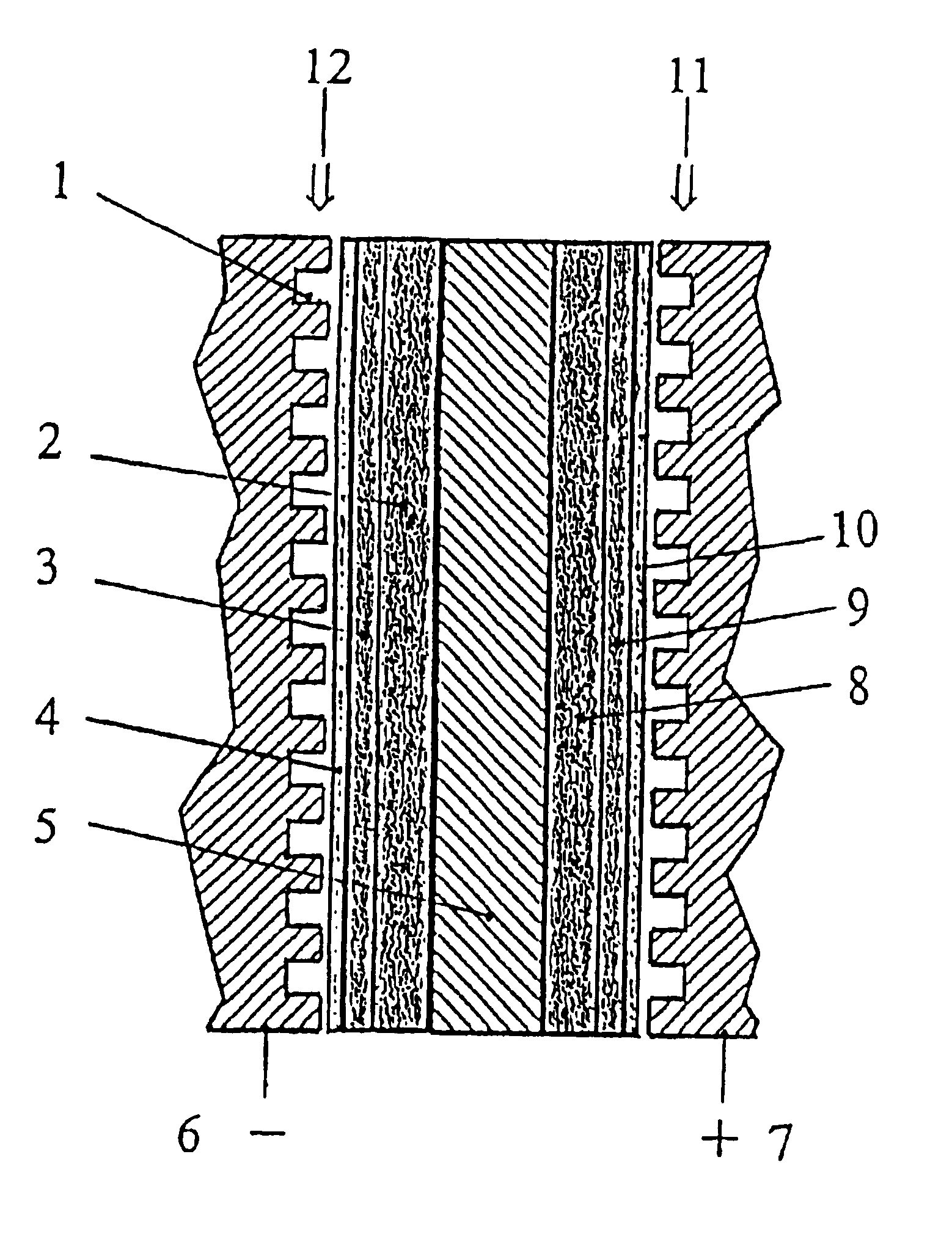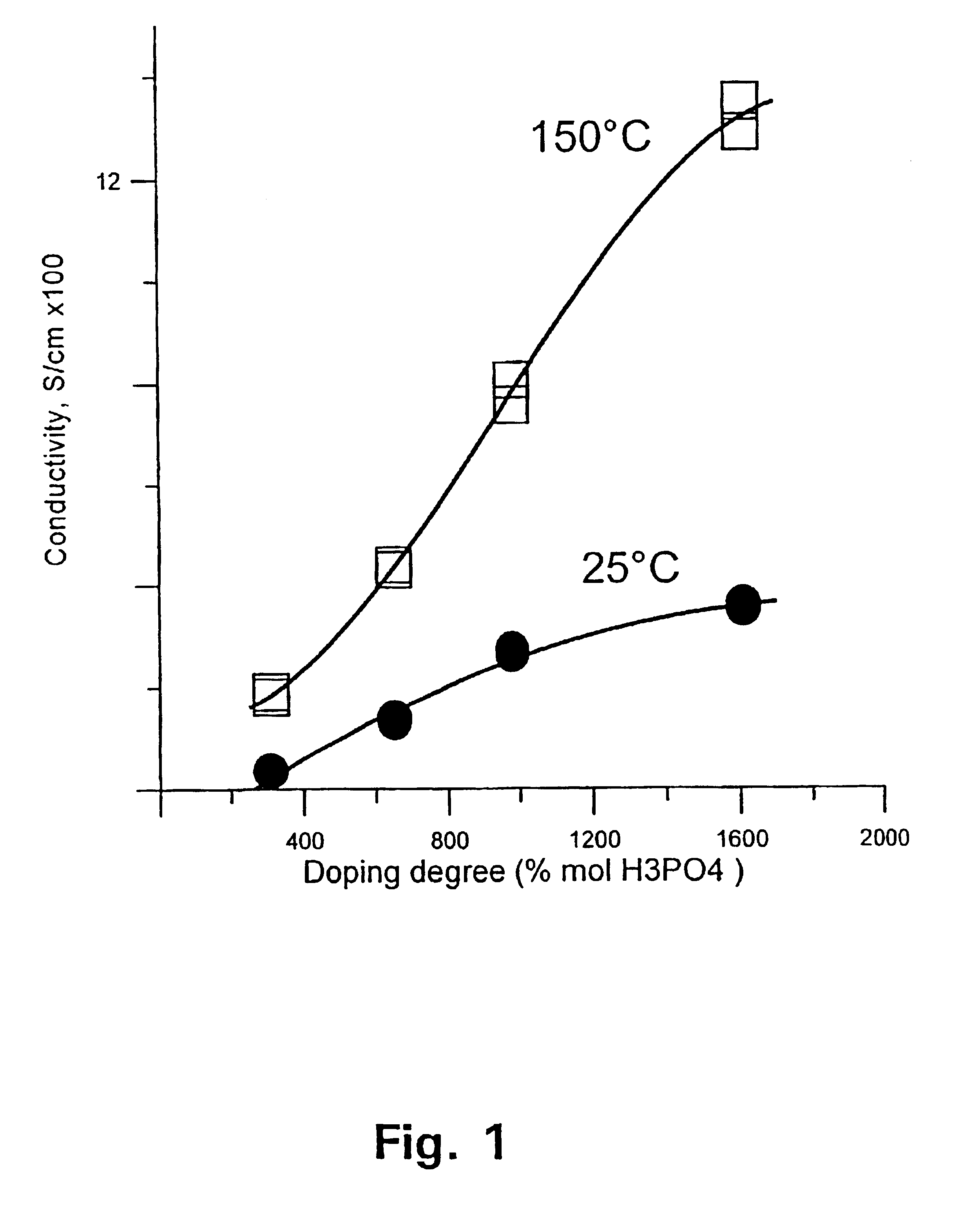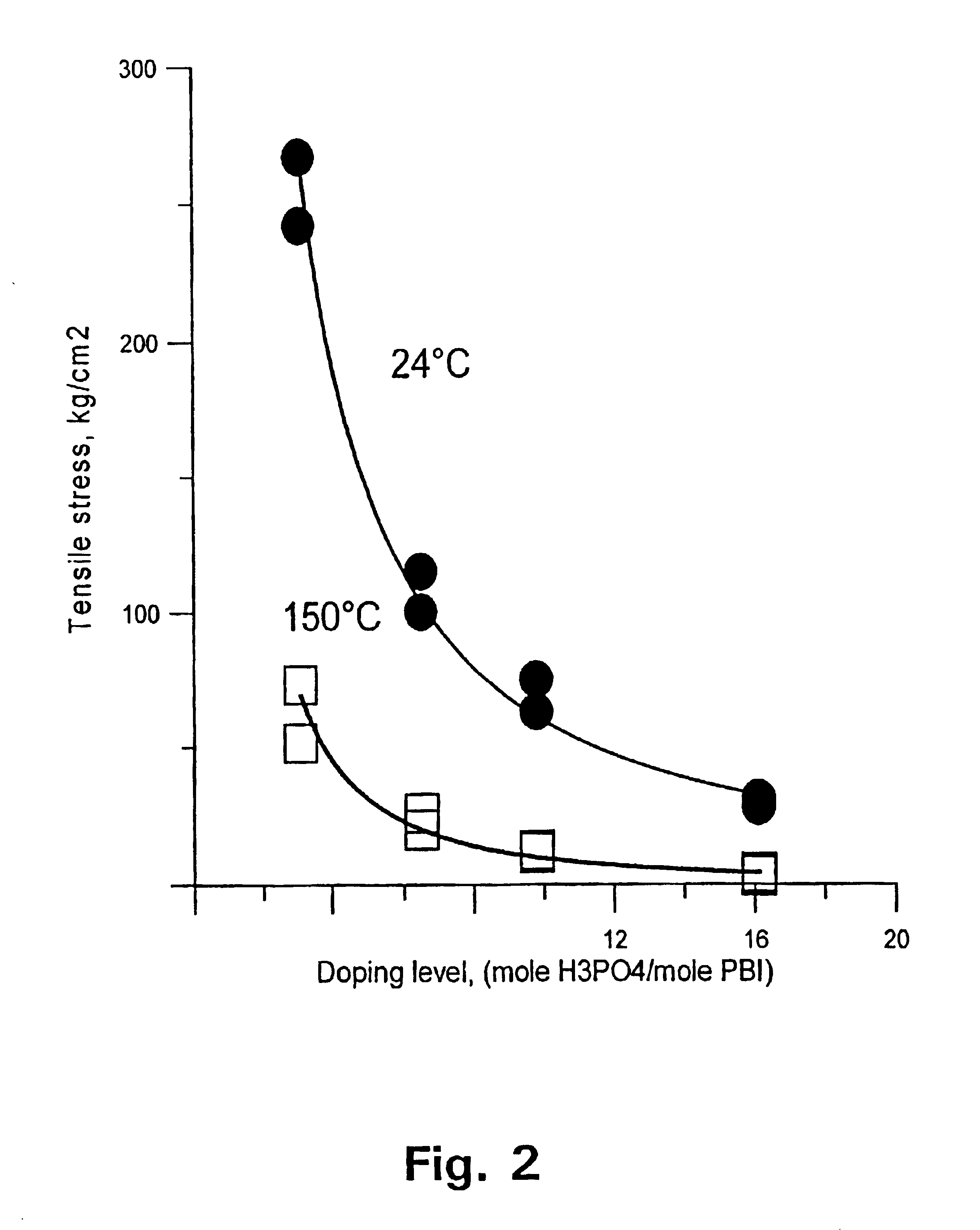Polymer electrolyte membrane fuel cells
a technology of electrolyte membrane and fuel cell, which is applied in the direction of fuel cell, fuel cell auxilary, electrochemical generator, etc., can solve the problems of significant loss of cell performance, reduced conductivity, and high pressure required to be of any practical use, and achieve high ionic conductivity, good performance, and high tolerance to fuel impurities
- Summary
- Abstract
- Description
- Claims
- Application Information
AI Technical Summary
Benefits of technology
Problems solved by technology
Method used
Image
Examples
example 1
[0128]20 grams of 3 wt % PBI solution in dimethylacetamide were poured into a glass dish of 145 mm diameter. After drying in a ventilated oven at 85° C. for 30 hours, 100° C. for 10 hours, and then at 120° C. for 10 hours, the polymer membrane were washed with distilled water at 80° C. to remove the residual solvent and stabilising salts.
[0129]The membrane was thereafter immersed in phosphoric acid of concentration 50, 65, 75, and 90 wt %, respectively. After 15 days at room temperature, the membrane was doped at levels of 310, 650, 980, and 1610 mol %, accordingly. FIG. 1 shows the conductivity of the membrane as a function of the doping level at temperatures of 25 and 150° C., respectively. FIG. 2 shows the tensile stress of the membrane as a function of the doping level at temperatures of 25 and 150° C., respectively.
example 2
[0130]Onto a wet-proofed carbon backing substrate (Toray paper TGP-H-120, Toray Ind. Inc.) a slurry of 60 wt % carbon powder (Vulcan XC-72, Cabot) and 40 wt % polytetrafluoro-ethylene (PTFE) was applied. The resulting layer was then dried and sintered at 370° C. for 20 minutes. This supporting layer is hydrophobic so that it allows access of reactive gases. As a bridge between the carbon paper backing and the catalyst layer this layer prevents also the electrode from serious cracking after drying and sintering.
[0131]A mixture of 40 wt % Pt / C catalyst powder and 60 wt % PBI from a 3 wt % polymer solution in dimethylacetamide was well mixed and applied on to the supporting layer of the carbon paper by tape-casting. The platinum loading in the catalyst layer is 0.45 mg / cm2. After drying at 130° C. for 10 minutes, the electrode was impregnated with a mixed acid of 65 wt % phosphoric acid and 35 wt % trifluoroacetic acid. The amount of impregnated phosphoric acid is related to the PBI co...
example 3
[0133]On to the wet-proofed carbon substrate (Toray paper TGP-H-120, Toray Ind. Inc.) a slurry of 60 wt % carbon powder (Vulcan XC-72, Cabot) and 40 wt % PTFE was applied and then dried and sintered at 370° C. for 20 minutes.
[0134]A mixture of 45 wt % PVC catalyst powder and 55 wt % PBI from a 2 wt % solution in dimethylacetamide was prepared and applied on to the supporting layer of the carbon substrate, as the cathode. A mixture of 45 wt % Pt—Ru / C catalyst powder and 55 wt % PBI from a 2 wt % solution in dimethylacetamide was prepared and applied on to the supporting layer of the carbon substrate, as the anode. The platinum loading in the catalyst layer of both electrodes was 0.45 mg / cm2. After drying at 130° C. for 5 minutes, the electrode was impregnated with a mixed acid of 60 wt % phosphoric acid and 40 wt % trifluoroacetic acid. The amount of impregnated phosphoric acid was related to the PBI content in the catalyst layer of the electrode, being in a molar ratio of 12 to 1.
[0...
PUM
| Property | Measurement | Unit |
|---|---|---|
| molar ratio | aaaaa | aaaaa |
| temperature | aaaaa | aaaaa |
| temperature | aaaaa | aaaaa |
Abstract
Description
Claims
Application Information
 Login to View More
Login to View More - R&D
- Intellectual Property
- Life Sciences
- Materials
- Tech Scout
- Unparalleled Data Quality
- Higher Quality Content
- 60% Fewer Hallucinations
Browse by: Latest US Patents, China's latest patents, Technical Efficacy Thesaurus, Application Domain, Technology Topic, Popular Technical Reports.
© 2025 PatSnap. All rights reserved.Legal|Privacy policy|Modern Slavery Act Transparency Statement|Sitemap|About US| Contact US: help@patsnap.com



